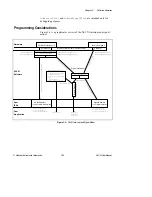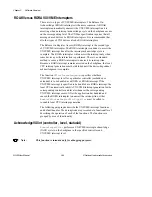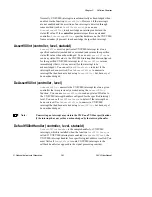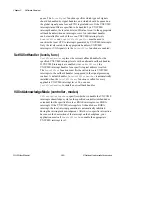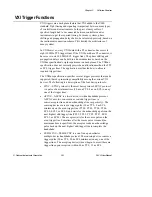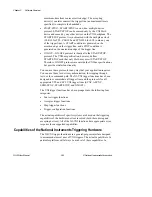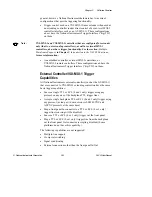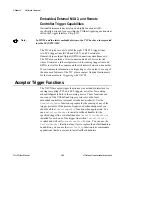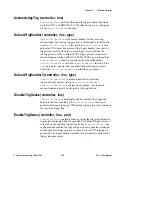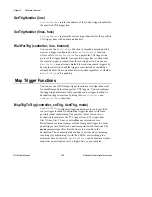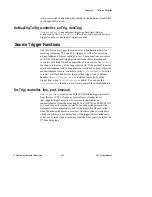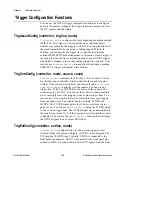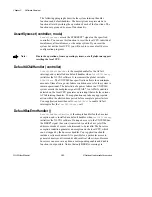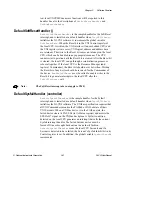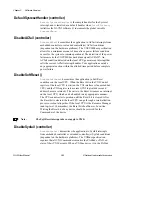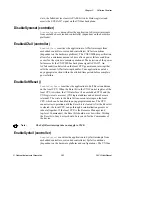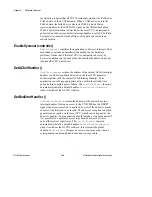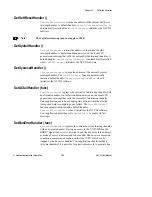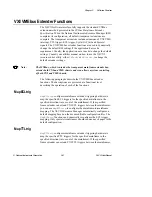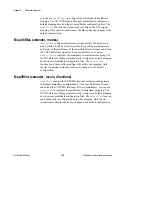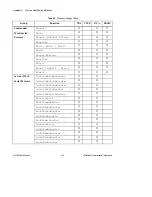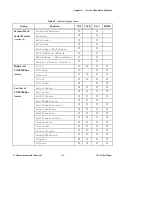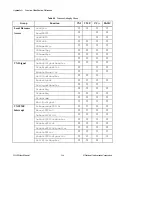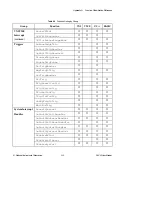
Chapter 3 Software Overview
© National Instruments Corporation
3-59
NI-VXI User Manual
panel. GPIO 3 is fed back in as the EXTCLK signal used for signal
conditioning modes with
MapTrigToTrig
. The six remaining GPIOs
are dependent upon the hardware platform. Regardless of the sources
connected to the GPIOs,
TrigExtConfig
configures several aspects
of the connection. You can disconnect and feed back the connection for
use as a crosspoint switch. You can also choose whether to invert the
external input. In addition, you can configure the GPIO to be asserted
high or low continuously. In this configuration, no input mapping is
possible (that is, no trigger line can be mapped to the GPIO).
TrigTickConfig (controller, mode, source, tcount1, tcount2)
TrigTickConfig
configures the TIC chip’s dual 5-bit tick timers.
This function can initialize with auto reload, initialize with manual
reload, do a manual reload, or disable the current tick timer settings. If
the tick timer is initialized, you must call either
EnableTrigSense
or
SrcTrig
to start the tick timer. You can use any GPIO line, CLK10, or
EXTCLK as the source of the tick timer. Both tick timers—TICK1 and
TICK2—count independently from the same internal counter. The
range for each tick timer is specified as a power of two from 0 to 31. If
you did not select auto reload, the timer stops when TICK1 has counted
to zero. You can use
MapTrigToTrig
to map the TICK1 output signal
to one or more trigger lines, or to map the TICK2 output signal to one
or more trigger lines or GPIO lines. Both TICK1 and TICK2 outputs
are square wave outputs. The signal is asserted for the duration of the
corresponding tick count and then unasserted for the duration of the
count.
System Interrupt Handler Functions
With these functions, you can handle miscellaneous system conditions
that can occur in the VXI/VME environment, such as Sysfail, ACfail,
Sysreset, Bus Error, and/or Soft Reset interrupts. The NI-VXI software
interface can handle all of these system conditions for the application
through the use of callback routines. The NI-VXI software handles all
system interrupt handlers in the same manner. Each type of interrupt
has its own specified default handler, which is installed when
InitVXIlibrary
initializes the NI-VXI software. If your application
program requires a different interrupt handling algorithm, it can call the
appropriate
SetHandler
function to install a new callback handler. All
system interrupt handlers are initially disabled (except for Bus Error).
The corresponding enable function for each handler must be called in
order to invoke the default or user-installed handler.

